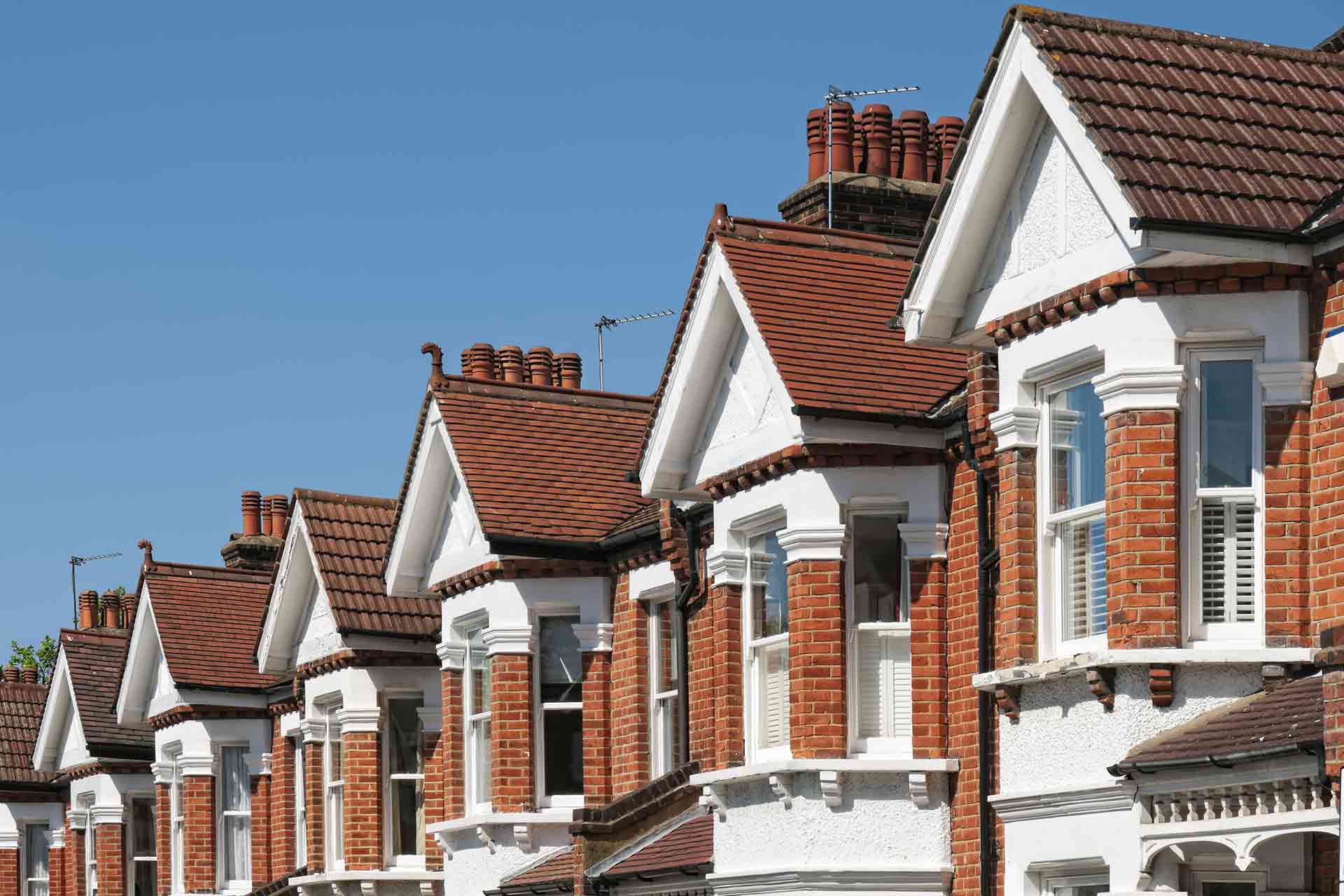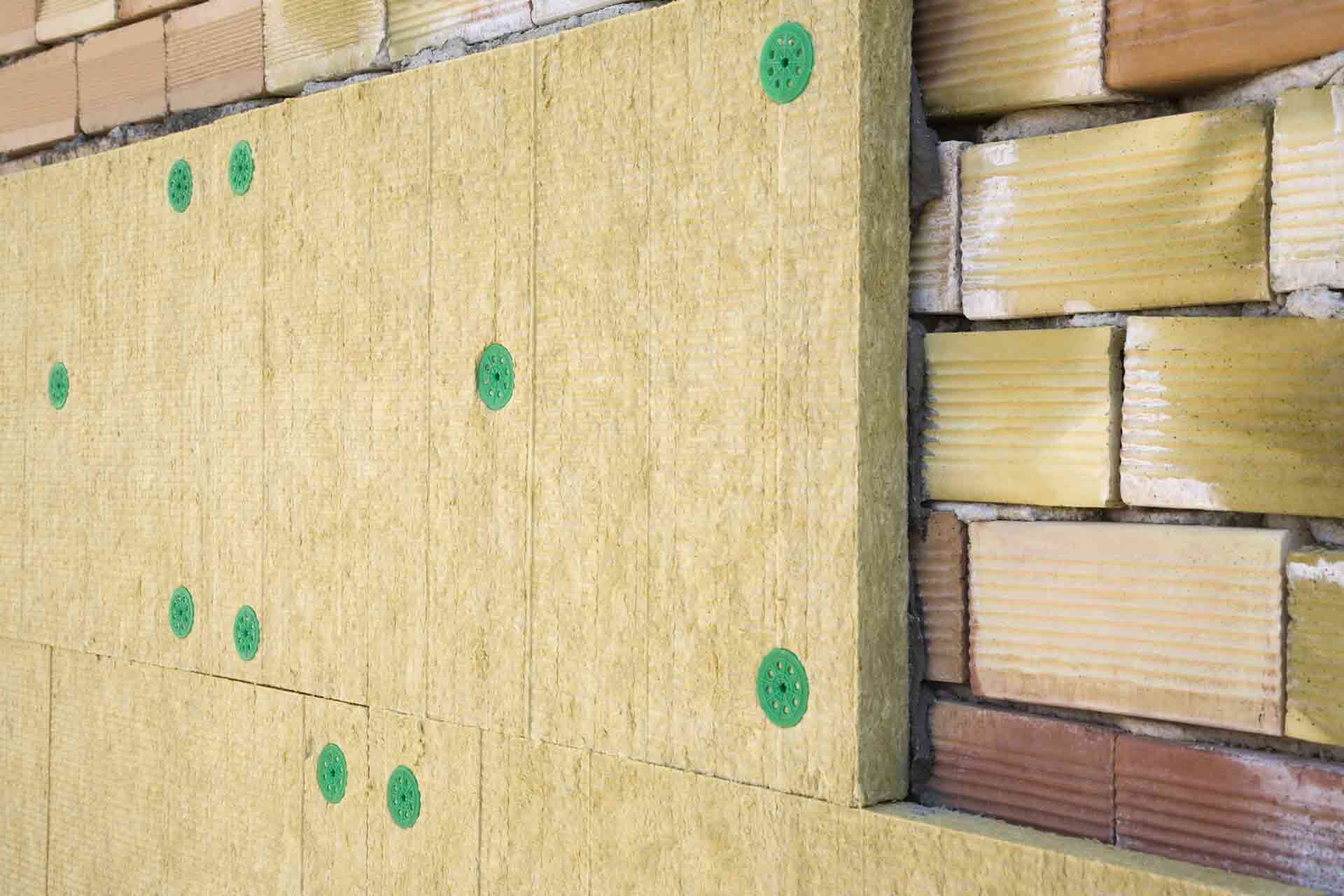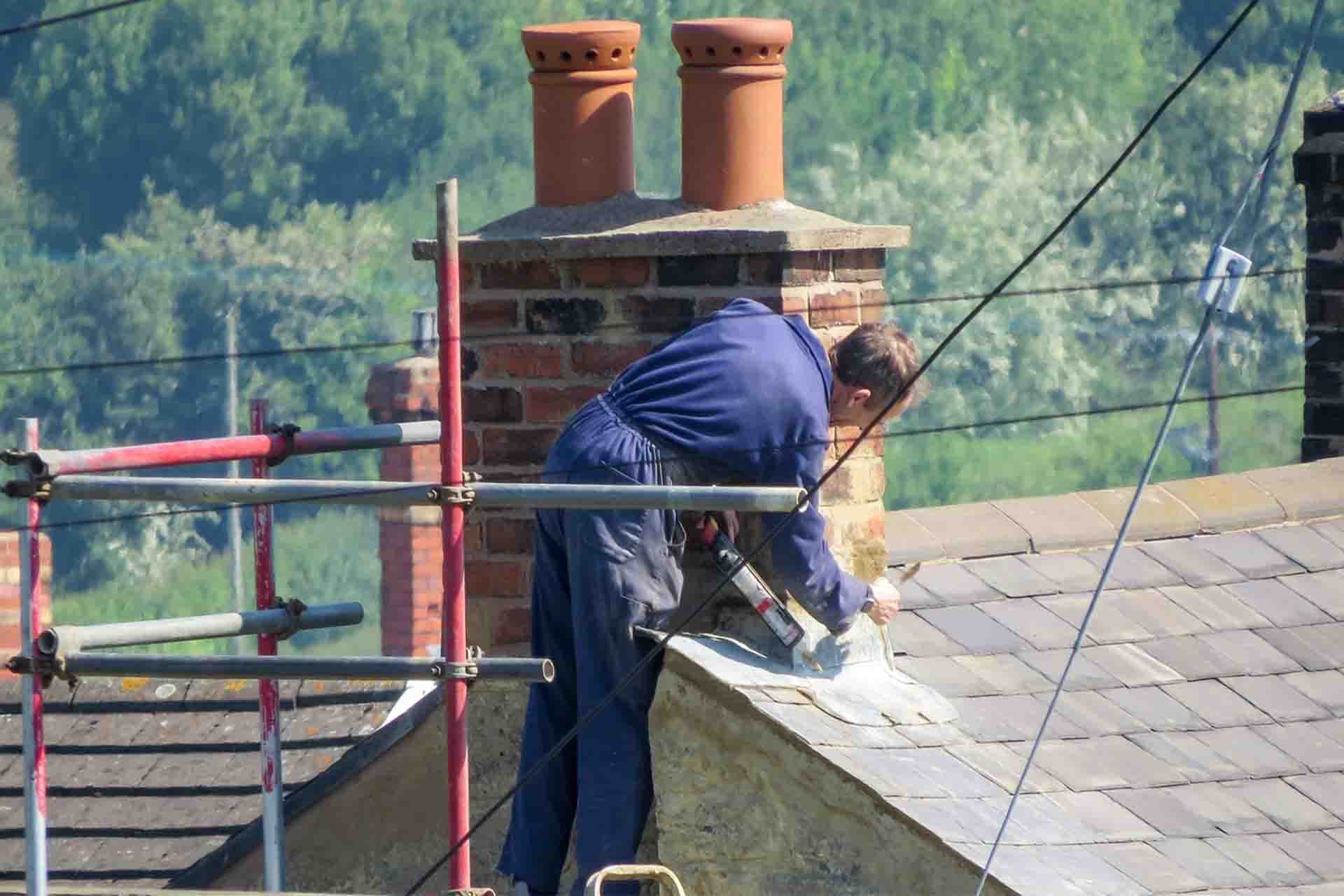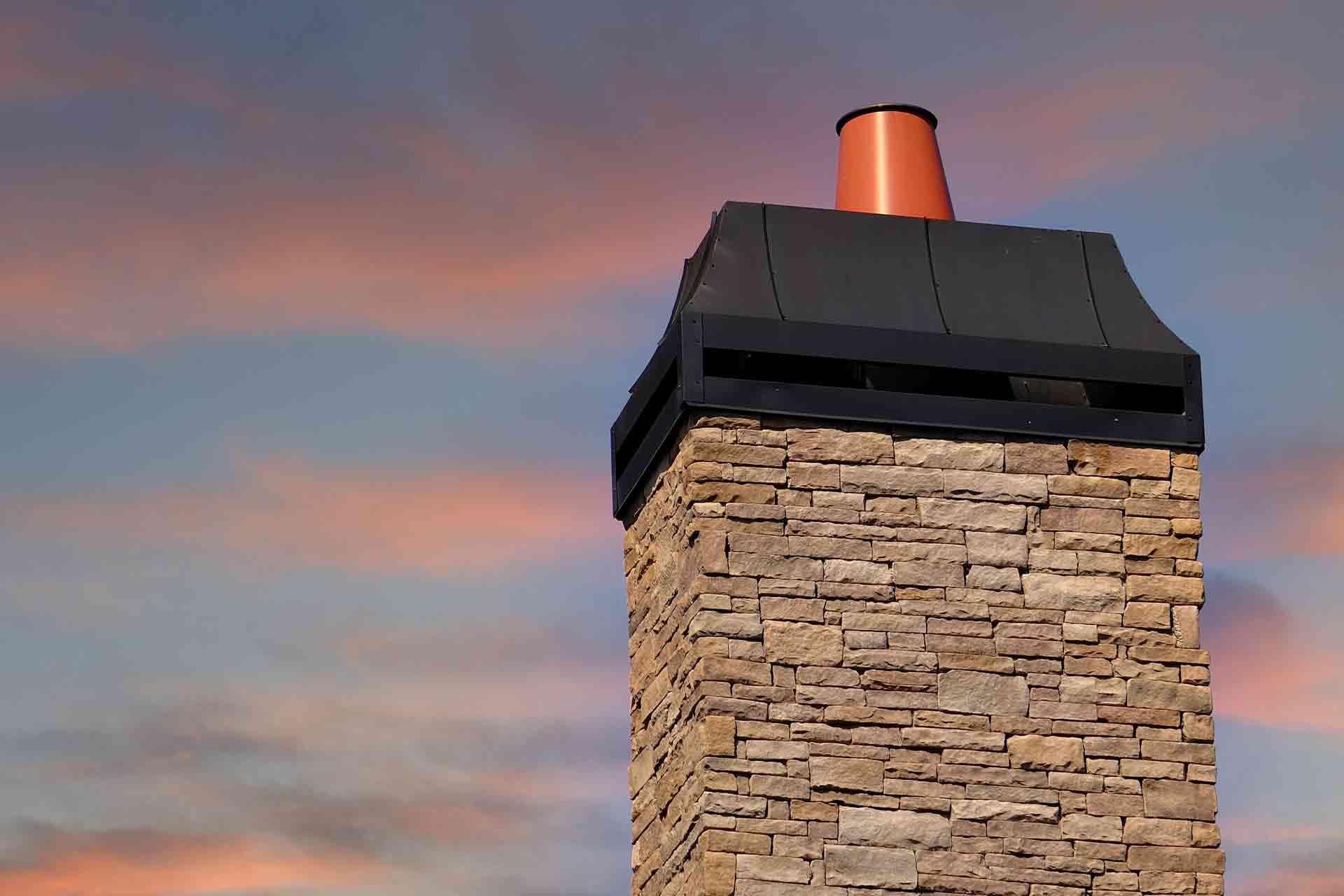Blog>Cost Guides>How much does a chimney liner cost?
Last updated: 5 March 2024
How much does a chimney liner cost?
Whether you have a log burner or an open fire, it's important to keep your chimney in good working condition with a flue liner. But, how much does a chimney liner cost in the UK?

Fast Facts
The average chimney liner cost in the UK is around £175 - £250 per metre (materials only)
Labour for chimney flue liner installation is roughly £180 - £250 per day
Local chimney specialists can advise on the best chimney liner for your home
Keep reading to find out more about the various chimney liner costs, including flue liner installation.
How much does a chimney liner cost in the UK?
We spoke to the online estimators at My Build Estimate – a professional estimating company monitored by the Royal Institution of Chartered Surveyors (RICS) – to find out the average cost of a chimney flue liner in the UK.
| Chimney liner costs | Range - Low | Range - High |
|---|---|---|
| Flue liner materials (per metre) | £175 | £250 |
| Cherry picker hire (day rate) | £200 | - |
| Chimney expert (day rate) | £180 | £250 |
| Supplying the liner (per metre) | £175 | £200 |
| Last updated: May 2024 Our costs are ballpark averages - get a local tradesperson to quote now | ||
The cost of just supplying the liner will be in the region of £175 - £200 per metre.
The cost to supply and fit a chimney liner will be closer to £250 per metre.
Your chimney may need other remedial works e.g. new pots, flaunching, repointing, repairs etc. If so, those will be extra costs you'll need to budget for.
For an accurate cost for your project, we recommend getting three quotes to compare.
Wood burner and flue liner installation costs
If you're looking to install a wood burner and flue liner, here are some average costs for wood burner and flue liner installation in the UK:
| Use existing flue | New flue in existing chimney | External twin wall flue system | |
|---|---|---|---|
| Form new fireplace and hearth | £900 | £1,500 | £3,000 |
| Use existing fireplace | £550 | £1,150 | £2,550 |
| Last updated: May 2024 Our costs are ballpark averages - get a local tradesperson to quote now | |||
The cost of installing a new wood burner will vary from around £550 - £3,000.
The main factors that will affect the price are whether you're using a) an existing fireplace, and b) an existing chimney flue. If not, the installation cost will be higher.
Cost of chimney liner for wood burners
When it comes to the cost of chimney liners for wood burners, you're looking at a total cost of around £500 - £900.
The exact cost will depend on the material of the flue liner – as well as the size and shape of your chimney flue.
Chimney flue installation costs
If you don't have a chimney already, you'll have to budget for the cost of a new chimney flue installation.
The average cost to create a fireplace and install the entire chimney system is around £1,900 - £3,500.
See the tradespeople we've checked and recommend for your job
How much does it cost to install a chimney liner in the UK?
When it comes to the installation cost to install a chimney liner, the average cost of a flue liner installer near you will likely be somewhere in the region of £180 - £250 per day.
As a rough guide, it usually takes somewhere between 1 and 3 days to install a chimney liner in the UK – depending on the complexity of the installation.
Chimney flue liner installation hourly rates
Although chimney liner installation is often quoted by the day or by the job, the hourly rate works out on average to be £22 - £32 per hour.
Reline chimney cost
If you’re replacing an existing liner, you'll need to factor in the cost of removing the old liner first.
With that in mind, the average reline chimney cost will often be higher than installing a chimney liner for the first time.
Chimney liner cost calculator
To work out the cost of installing a chimney liner, you'll need to factor in the following:
Measure the size of your chimney to work out how much liner you'll need
Choose the type of liner to be used (the flu liner cost will vary depending on the type)
Include the labour costs for the job (usually 1 to 3 days)
With those three pieces of information, you should be able to work out roughly how much your chimney liner installation will cost.
Speak to local chimney liner specialists to get accurate quotes in your area.
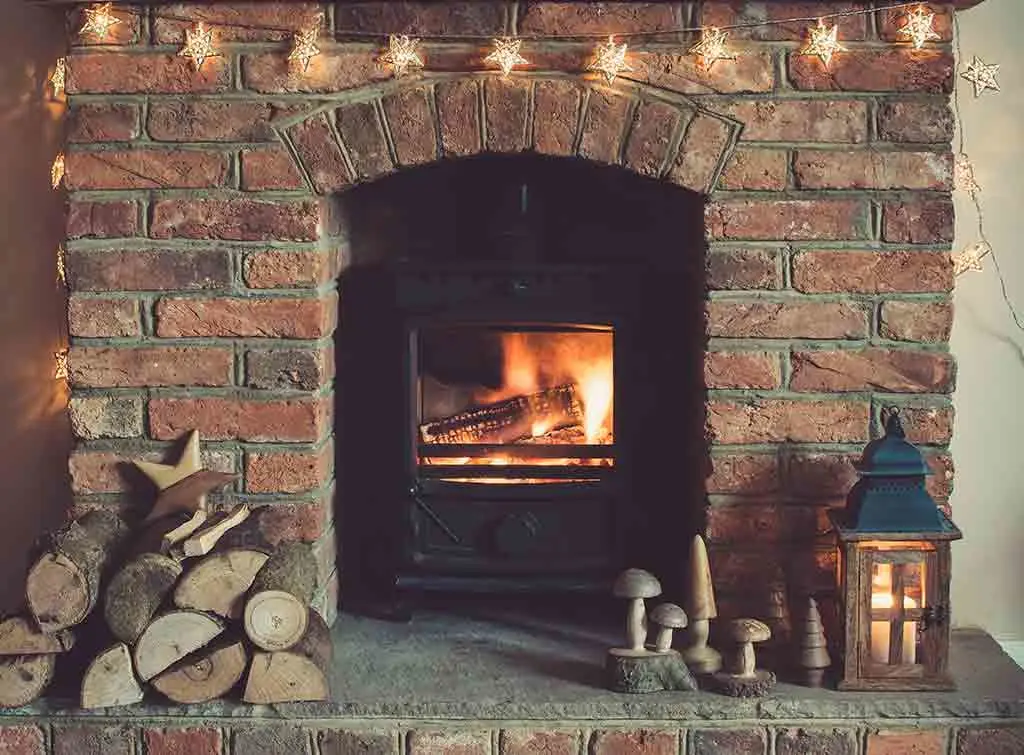
Get quotes for chimney flue liner installation
We always recommend getting chimney liner installation quotes from at least three different tradespeople. That way you can make sure you're being quoted fair and competitive prices for the work.
When getting quotes, remember to ask for a detailed breakdown of all the costs (labour, flue liner cost, other materials, etc). This helps you compare quotes from different tradespeople, and avoid any hidden costs.
And great news, we can do the legwork for you with our request a quote feature. Tell us about the job you need doing and we'll get multiple local tradespeople to contact you directly.
Why do chimneys need a liner?
If you're hearing about chimney flue liners for the first time, you might be wondering if they're really necessary. And the answer is, yes they are.
Within this system, chimney flue liners usually serve four main functions:
To stop heat transferring into the structure of the chimney, which is important so that the hot air is drawn up from your fireplace or heating appliance
To ensure maximum efficiency of your heating appliance, as ventilation is key to allow airflow and avoid a build-up of dangerous levels of carbon monoxide
To protect the structure of the building from damage caused by the acidic substances in the flue gases
To prolong the lifespan of your chimney and keep your home in optimal condition
Installing a well-insulated chimney liner is a price worth paying to have an efficient and safe chimney system.
See the tradespeople we've checked and recommend for your job
6 signs that you need to install a new chimney liner
Here are some common signs that might indicate that your chimney needs lining, or relining:
You have a new heating appliance and the existing flue is too big for it
The flue is leaking smoke and/or fumes into your home
The existing flue is too cold and is not drawing properly
Condensation or tar may be seeping through the walls of the chimney and causing stains on the inside or outside of the building
The existing flue is in poor condition due to erosion or other damage and is causing leakage, chilling and poor up-draught
The existing liner was installed the wrong way up causing tar and condensation leakage (a common issue with chimneys built from 1965 onwards)
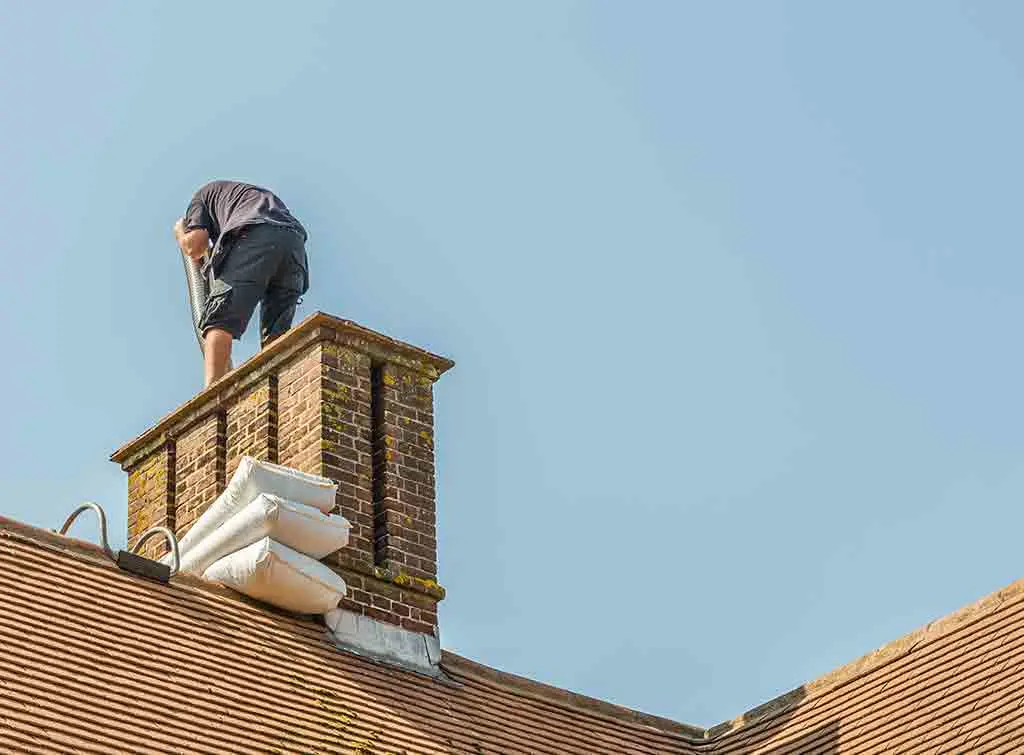
8 benefits of installing chimney flue liners
Here are some of the benefits that make the cost of your chimney flue liner a worthy investment:
Chimney liners prevent carbon monoxide and other harmful gases from leaking into living spaces in your home
Most home insurance providers will cover the cost of relining your chimney
Flue liners help prevent any condensation (often associated with gas-burning appliances) from leaking back into the structure of your home
Some insurance policies limit coverage if home renovations are carried out with no improvement made to the chimney
Adding a liner to a chimney with a wood-burning stove or fireplace will prevent condensation that can lead to a build-up of creosote and tar – both highly flammable and pose a significant fire risk
Installing a chimney liner helps you, as a homeowner, adhere to building and fire safety regulations (the violation of which could land you with some hefty fines and penalties)
The price of installing a chimney liner far outweighs the risk of chimney fires
Chimney liners are a cost saver too as they drastically improve heat retention and airflow, which means you’ll use less fuel
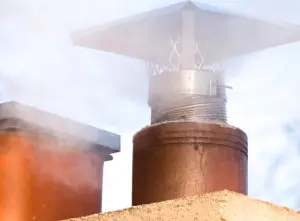
Types of chimney flue liner
There are several types of chimney liners available at different price points.
Choosing the right type and quality of chimney liner is important to ensure you have a safe, efficient chimney system.
It's also worth noting that there are two grades of quality for chimney flue liners:
316 grade – This is the lower-cost chimney liner option. It's perfectly fine to use if you’re only planning on burning seasoned wood or have a gas heating appliance
904 grade – The more expensive but also more durable option that often comes with a longer guarantee. You’ll need this grade if you plan on regularly burning coal
Here are some of the most common materials used for chimney liners:
1. Rigid stainless steel flue liners
Generally considered to be the entry-level chimney liner, rigid stainless steel chimney liners typically have the lowest price point.
However, being cheaper they also tend to have a limited lifespan guaranteed of 10 years. So you may need to replace them more frequently than other types of flue liner.
Pros
One of the lower-cost flue liner options available
Can be installed as a freestanding unit (on the inside or outside of your property)
Suitable for appliances that burn wood, oil or gas
Cons
Short lifespan (many stainless steel liners are only guaranteed for 10 years)
Can corrode rapidly with the use of certain fuels
Easy to damage during the installation process
2. Flexible steel flue liners
A flexible chimney liner is a great alternative to more rigid types, as it provides a better way to improve the performance of your chimney.
Flexible steel flue liners will expand and contract according to changes in temperature.
They'll either have a single skin for use with gas appliances, or twin skins made from overlapping strips of high-grade stainless steel (suitable for wood and multi-fuel appliances).
Pros
Flexible liners are generally quicker, easier and cheaper to install than rigid liners
Less frequent cleaning is needed due to reduced creosote build-up
The liner can be removed for easy cleaning and maintenance
Cons
Metal flexible liners have a limited lifespan
May suffer corrosion with certain fuel types

See the tradespeople we've checked and recommend for your job
3. Pumice / concrete flue liners
Pumice and concrete chimney flue liners are both made up of pumice, but concrete liners will have some cement blended in.
The advantage of pumice is that it's a naturally insulating material, which makes it an ideal choice for a chimney liner.
A pumice or concrete chimney liner allows your chimney to quickly reach its optimum temperature. It will also keep the chimney warmer for longer, which reduces the likelihood of condensation and soot build-up.
Pros
Lightweight materials are easy to handle and inexpensive
Highly insulating allows strong draw and minimum heat loss
Helps achieve optimum performance from your heating appliance and reduces your fuel costs
Cons
Installation costs are often higher than other types of flue liner
Complicated to install for chimneys with bends
Repairing damaged or cracked pumice or concrete can be complicated and expensive to repair
4. Clay / ceramic flue liners
Clay and ceramic flue liners (often referred to as clay tiles) have been around since the 1900s and are still a popular choice of chimney liner.
They're a great option as they can withstand extremely high temperatures without damaging or hindering the performance of the liner.
The clay material itself is relatively inexpensive and, once installed, will last for a good 50 years. However, the installation process for clay and ceramic flue liners is more complicated and expensive to do.
Pros
Long lifespan of 50+ years thanks to extreme wear resistance
Excellent resistance to acids and other corrosive substances
Made of natural raw materials and are therefore easily recyclable
Cons
Clay flue liner installation costs can be expensive
The rigid shape means they’re not suitable for chimneys with any bends
Installation and maintenance work are more complicated than other flue liners
5. Cast-in-place flue liners
As you might guess from the name, cast-in-place chimney liners are installed by pumping a mortar mix into the chimney around an inflated rubber tube, which creates a smooth rounded surface within the chimney.
Once the mortar has fully set, the rubber tube is removed and the liner is left intact. This process creates an excellent liner but makes it the more expensive option to install.
Cast-in-place liners are excellent, durable insulators and have a lifespan of up to 50 years. They're generally lightweight and also provide a sturdy structure that can help reinforce the existing chimney.
Pros
Boost structural integrity of old chimneys making them ideal for chimneys in poor condition
Improves efficiency of heating appliances
Suitable for use in masonry chimneys that burn all types of fuel
Cons
Installation can be complicated and expensive
Requires expert knowledge of the casting installation process
6. FuranFlex® flue liners
FuranFlex® is one of the newest chimney lining systems available on the market and uses a glass fibre reinforced thermosetting resin, which is as strong as steel when set.
It’s most commonly used in listed buildings to bring large open fires back into use or Inglenook fireplaces, where it might not be possible to alter the physical characteristics of the fireplace or chimney structure.
It’s also particularly effective at lining long or bendy chimney flues, like those found in some Victorian houses.
Unlike steel liners, it gives better corrosion resistance, is gas and watertight, and generally comes with a 25-year guarantee (and is said to have a lifespan of 100+ years).
Pros
Its versatile nature makes it ideal for complex chimney structures
Relatively quick and easy to install
Corrosion-resistant and extremely durable with a lifespan of up to 100+ years
Cons
One of the more expensive options
Not all chimney professionals work with FuranFlex®
Find the best flue liner installers near me
Due to UK building regulations, we would strongly recommend you hire a professional tradesperson to install your chimney liner.
Hiring an experienced chimney liner installer comes with peace of mind that the work will meet regulations and keep you and your home safe.
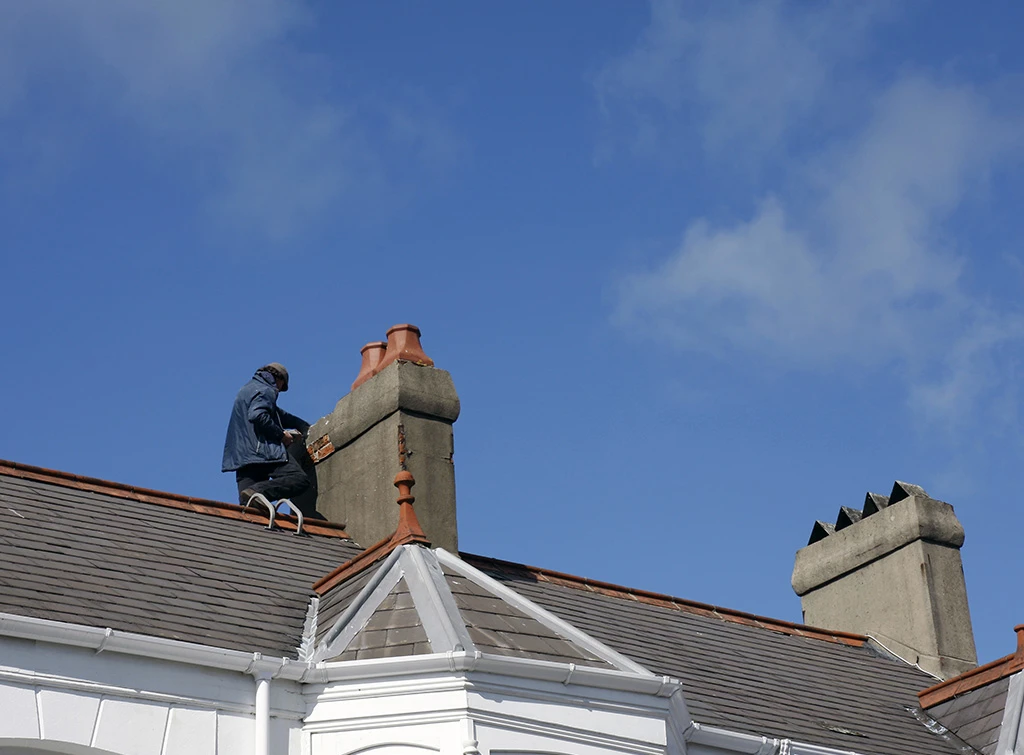
Hire a Competent Person
Ideally, you want to hire a tradesperson who is registered on a competent person scheme.
That way you can make sure that all your chimney work meets building regulations to British and European standards.
A Competent Person will have undergone specific training and assessments that assure the quality of their work.
Some of the competent person schemes to look out for include:
APHC (Allied Health Professions Council)
BESCA (Building Engineering Services Competent Assessment)
Certsure
HETAS (Heating Equipment Testing and Approvals Scheme)
NAPIT (National Association of Professional Inspectors and Testers)
OFTEC (Oil Firing Technical Association)
Stroma
To help you hire the right tradesperson, check out our guide on how to find the best local chimney specialists.
Enter your postcode in the box below to search our directory of approved local tradespeople near you:
See the tradespeople we've checked and recommend for your job
Useful chimney liner installation checklist
Identify what type of chimney you have and if possible inspect to see if it already has a liner to be replaced
Research the types and costs of flue liners that are suitable for your chimney and heating appliance
Speak to a professional tradesperson to get expert advice and discuss the costs of the chimney liner installation
When hiring a professional tradesperson, ensure they are experienced in chimney installations and part of a recognised accreditation scheme, such as HETAS
Get quotes from multiple tradespeople for the installation costs of chimney liners and find out what's included in the price
Hire a tradesperson who is familiar with all UK building regulations and British standards that apply to their work
Before undergoing any chimney liner installation work, make sure your chimney flue is professionally cleaned
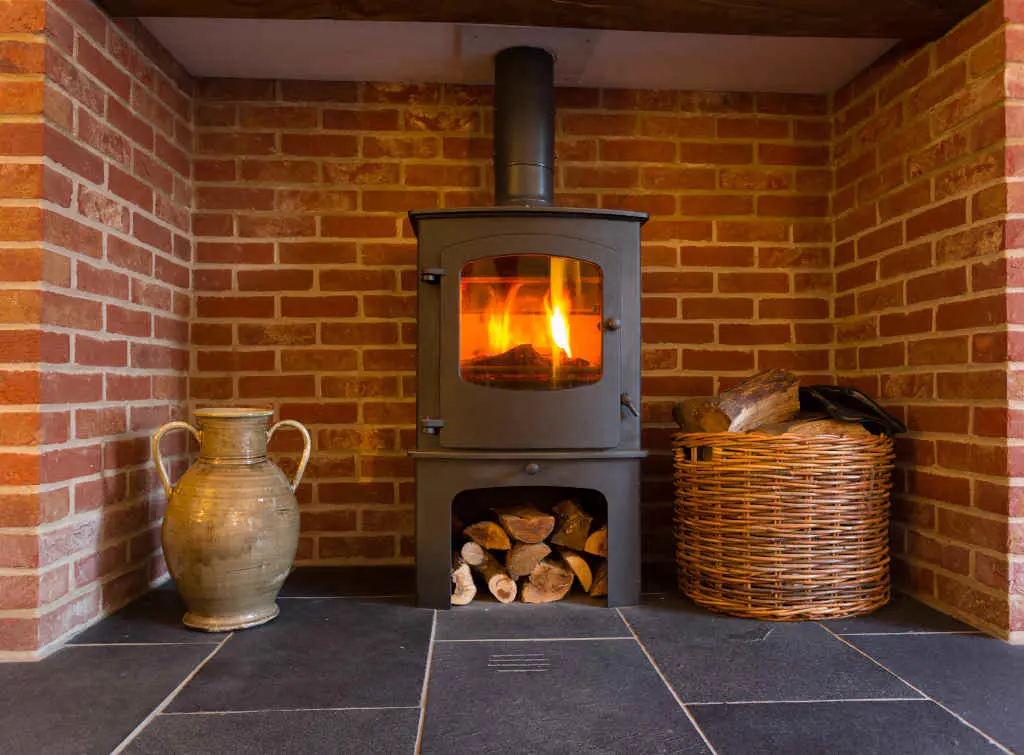
FAQs
Does my chimney need a liner?
In new-build properties, all chimneys intended for use with an open fire, wood-burning stove or gas fire need a chimney flue liner to comply with current UK building regulations.
As a general rule, if you have a chimney that you're using with an open fire or heating appliance then you need a chimney liner.
An inspection by an experienced chimney professional will tell you a) if your chimney has a suitable liner, or b) if you need to install a new flue liner for safety purposes.
Is it a legal requirement to line a chimney?
Current UK building regulations dictate that chimneys in all newly built properties must be fully lined and meet British standards.
In older properties, the regulations state that the chimney must be fit for purpose, which may or may not involve having a chimney liner installed.
To find out if your chimney needs a liner to meet legal requirements, a professional chimney liner installer can carry out an inspection and deem whether your chimney is safe for the intended purpose without fitting a liner.
What type of chimney liner do I need?
Several different types of chimney liners are suitable for different uses and available at different costs.
The type of liner you need will depend on the type of chimney and heating appliance(s) you have.
We recommend speaking to an experienced local chimney installer to get their professional advice.
How long will a chimney liner last?
The lifespan of a chimney liner depends on the quality and material of the liner itself, which will also affect the cost.
The average lifespan of a newly installed chimney liner can vary from 10 to 50+ years, so it’s worth considering this when choosing which liner is best for your chimney.
A lower quality stainless steel chimney liners and pumice chimney liners generally have a 10-year guarantee. A more expensive, higher quality stainless steel liner or a Furanflex® liner will be more like 20 years.
Are chimney liners safe?
Chimney liners are safe as long the installation is carried out correctly. If you’re planning to use an open fire or heating appliance in your home it’s important to follow the manufacturer's safety instructions.
Chimney liners should also be swept regularly to ensure the flue is clear of blockages or any build-up of creosote or soot.
Does a chimney with a liner need sweeping?
Yes. A chimney with a liner should be swept regularly, ideally at the start and end of the heating season. This is to make sure it’s kept clean of debris such as bird nests and cobwebs, as well as any build-up of creosote.
If you’re burning wood or coal, we recommend having your chimney swept once a quarter, when in use.
For smokeless fuel, gas and oil-burning appliances, your chimney should be swept at least once a year.
Why do chimneys need to be cleaned?
Keeping your chimney clean ensures optimum efficiency of the chimney and flue itself. It also reduces the risk of chimney fires occurring.
A chimney fire can spread extremely quickly and usually starts due to a build-up of combustible substances, such as soot or creosote.
Regularly cleaning or sweeping your chimney will minimise the chances of a chimney fire starting.
See the tradespeople we've checked and recommend for your job
More Cost Guides
See the tradespeople we've checked and recommend for your job

